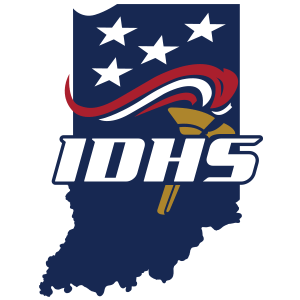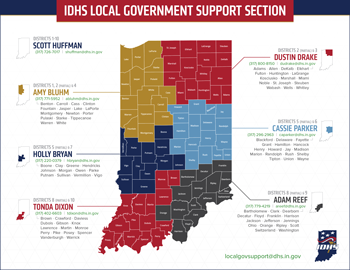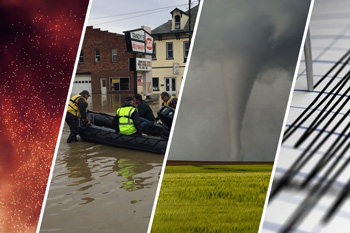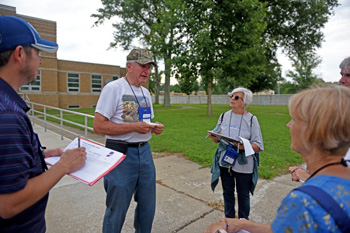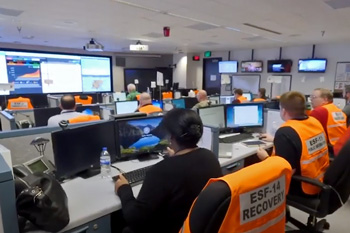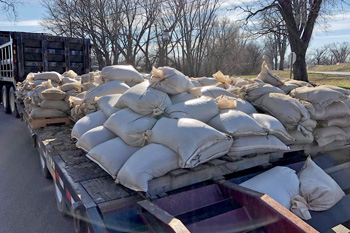Emergency Management and Preparedness
Hours
8 a.m. – 4:30 p.m. Monday – Friday
except state-observed holidays
Indiana Dept. of Homeland Security
Indiana Government Center-South, Room E208
302 W. Washington St.
Indianapolis, IN 46204-2739
Call us: 317-232-2222
Email us: Select a section
County EMAs and IDHS District Liaisons: Statewide Lookup
About the Emergency Management and Preparedness Division
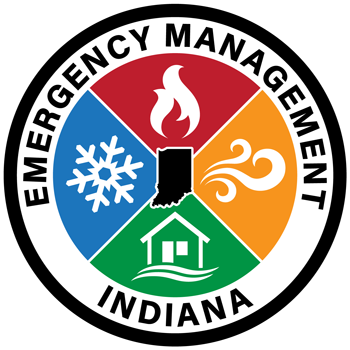

The Emergency Management and Preparedness Division provides the support, tools and resources to ensure that the state of Indiana can build, sustain and improve its capability to prepare for, protect against, respond to, recover from and mitigate all hazards. IDHS supports first responders and communities as they prepare for and respond to disasters and large-scale events. This includes:
- Leading and engaging stakeholders at all levels (local, state and federal) to assess risks, create plans, train personnel and practice responses
- Operating a state-of-the-art emergency operations center to provide a communication hub for sharing information and effectively orchestrating resource logistics when disasters overwhelm local emergency management resources or capabilities
- Coordinating the state’s response to communities that need help responding to disasters or implementing plans and processes to mitigate them
- Managing damage assessments and serving as the liaison to the Federal Emergency Management Agency (FEMA) when distributing individual assistance and public assistance to damaged communities to help them recover
- Working with communities on mitigation projects that protect citizens from the natural or man-made disasters relevant to Indiana
